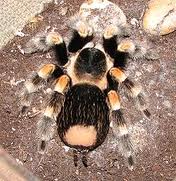First of all ultrasound cavitation slimming machines, the type used in surgeon’s offices and clinics, are typically medium sized machines that are either built into a special cavitation procedure room, or are wheeled in when necessary. The surgeon is sometimes the one who actually does his procedure, although in large elective cosmetic surgery (plastic surgery) clinics, it is a nurse or or other trained professional who actually performs the procedure. You wouldn’t want one of these types of machines for home use. Aside from being very large, they are also very powerful and, while the procedure is generally very safe when performed by a professional, they could be dangerous if used improperly.
Ultrasound Liposuction | Ultrasonic Liposuction
Ultrasound cavitation machines are also very expensive at the moment. In a surgeon’s office, they may pay $30,000 to 100,000 dollars for just one machine depending on the model and power. The reason that they are so expensive is that they are such newly invented technology. You know how everything drops in price every year or so after it first comes out? Well, ultrasonic cavitation, as a procedure, was only invented in 2005, and only popularized to the point that machines were being mass produced around 2010 to 2011. It also takes a lot of special training to be able to operate the machine properly for cavitation, and this training can also be very expensive.
Not, the rumors about ultrasound cavitation slimming machines for home use are saying that we’re still a little ways out from them being released. Regardless, they will likely be much different from the ultrasonic cavitation slimming machines being used in surgeon’s offices and plastic surgery clinics now. The cavitation machines for home use will likely be smaller and less powerful than the ones used by doctors. Some people might be upset about this, but the fact is that the medical grade machines are simply too powerful for home use.
It’s said that the machines that will be available for home use will still, however, require some training to use properly. Think about it – if someone used one of these machines which was too powerful on themselves every day all over their body, they could do some serious damage. The procedure is nearly risk free when done by a doctor. However, in order to keep the risk level low for home users, the machines need to be made less powerful. So whereas it might take 12 session at most to see results at the doctor’s office, it could take twice that many for a home user. This will put some people off from buying an ultrasound slimming machine for their home. However, others will weight the cost of being able to do sessions every week for years on end and compare that to the cost of numerous sessions with a cosmetic surgeon and decide that the hefty price tag is still worth it.



















































